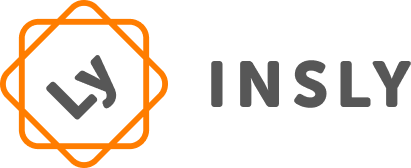We continue the series of interviewing insurtech influencers to find out their views on the most promising insurtech start-ups, obstacles to market disruption, impactful and attractive fields for funding, and much more. We have already published stories with Sabine VanderLinden, Ed Halsey, Rick Huckstep, Paolo Cuomo, and Robin Kiera, so don’t forget to check out these too!
This time Jan Kastory is sharing his ideas on the insurtech trends. As an investor at astorya.vc, Jan brings an interesting investor point of view into the picture. Speaking of attractive fields for funding, he points out that three of the largest markets – France, Germany, and the UK – are still unchallenged, whereas new insurtech hubs are emerging in Sweden and Spain. Jan emphasises a growing interest in risk underwriting and actuarial science, as well as claim and fraud technologies and new insurance products, especially for underinsured customer segments.
1. Please name three of the most promising insurtech start-ups in 2021. Why exactly these?
As an insurtech investor, my answers will be biased. At astorya.vc, we have developed investment thesis based on all the industry data we gather. In 2021, we see growing numbers in the embedded insurance space. Plugging insurance into the growing digital economy platforms is beneficial for insurers and platforms:
- insurers gain new, very scalable distribution channels;
- platforms gain very profitable revenue streams.
We invested in a Spanish start-up called Weecover. It is probably the most agile embedded insurance team and technology solution in Europe.
The mentioned digital platforms, cloud solutions, and technologies are also where new risks are born from cyber threats to outage risks. Riskwolf, our portfolio company from Switzerland, helps (re)insurers to build parametric outage insurance products. Parametric insurance payouts offer new industry standards for the new economy.
We also strongly believe in augmented insurer start-ups. These are companies which help insurance professionals in their day-to-day jobs. For example, from astorya.vc portfolio, Zelros has raised $11M in 2021. Zelros’ AI algorithms help insurance agents increase conversions by even 20%.
2. What is the biggest obstacle for insurance start-ups that holds back market disruption and meaningful change?
The majority of insurtech start-ups earn money in one out of two business models:
- B2B Software-as-a-Service for insurers;
- commissions on insurance sales.
Both of these require close collaboration with insurance companies who are not always the fastest adopters or decision-makers. B2B SaaS sales cycles take 12, 18, or 24 months. Only a few actors in Europe have processes to provide insurance capacity to start-ups, especially on smaller insurance markets. For start-ups which don’t have cash for such a long runway, time loss is a major obstacle. This dependency is holding back the market.
There are a few ways to overcome it. For example, Alan obtained capital and an insurance license to operate independently. This is a very tough process. Some work with the fastest movers, especially agile (re)insurers, brokers, and agents, with shorter or structured decision processes. At astorya.vc, we have been working closely with some very innovative insurers. For instance, Wakam is capable of offering insurance capacity to start-ups within weeks. So, what is an obstacle for the majority of the market is an opportunity for Wakam. Success doesn’t happen overnight in this industry, but they seem to be well placed to succeed.
3. If you were to establish your own insurance start-up, which problem would you solve and why?
At astorya.vc, we have only a few non-insurance investors. One of them explained his decision to invest, saying, “There is so much fat in the insurance sector, it needs to get burned.” In our opinion, the whole industry craves for transformation. We created our own insurance start-up astorya.io which is a platform for insurers and banks to find any insurance technology among 3,500 start-ups. AXA, CNP Assurance, and a few other partners of astorya.io pick and choose solutions tailored precisely to their needs. We see an insurtech for every insurance problem in Europe.
4. Which insurtech field will be the most impactful and attract funding in 2021?
Let me answer based on scouting.astorya.io data. In only June 2021, the insurtech funding was bigger than during the entire 2020. We now have 5 insurtech unicorns in Europe.
Three of the largest markets – France, Germany, and the UK – are still unchallenged. Whereas Sweden and Spain are becoming smaller insurtech hubs.
Looking at the value chain, less and less proportion of capital is being placed in distribution. The focus of distribution is turning from financing Facebook ads to distribution technologies (Wefox, Zego, Zelros, Qover, Weecover). There is a growing interest in risk underwriting and actuarial science such as new data and algorithms, especially in the UK. Also, claim and fraud technologies are growing (Shift Technology, Zelros) and new insurance products attract funding, especially for underinsured customer segments like freelancers or SMEs (Alan, Zego, Hokodo), but not only (Bought By Many for pets)
5.The future of insurance: what makes you hopeful, what worries you?
I see a bright future, nothing worries me. Innovation makes insurance cheaper for customers, while they receive better service. Risk is becoming more predictable and preventive, which is healthy for all parties. This question inspires me to ask another one: who should worry about the future of insurance?
About
Jan Kastory is the Founding Partner at astorya.vc, the first VC fund investing in early-stage insurance startups, and astorya.io, the largest database of insurance technologies in Europe. Prior to astorya.vc, Jan co-founded Euler Hermes Digital Agency which is one of the most recognised corporate innovation teams in B2B fintech and insurtech world.



